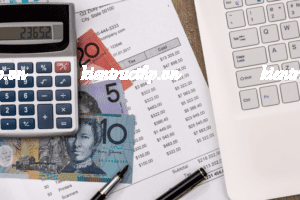
To help you better understand how the accounting equation works, here is a quick example of how the equation can be used. So, let’s take a look at every element of the accounting equation. For information pertaining to the registration status of 11 Financial, please contact the state securities regulators for those states in which 11 Financial maintains a registration filing. The effect of this transaction on the accounting equation is the same as that of loss by fire that occurred on January 20.
Buy Inventory on Credit
11 Financial may only transact business in those states in which it is registered, or qualifies for an exemption or exclusion from registration requirements. 11 Financial’s website is limited to the dissemination of general information pertaining to its advisory services, together with access to additional investment-related information, publications, and links. On 22 January, Sam Enterprises pays $9,500 cash to creditors and receives a cash discount of $500. The difference between the sale price and the cost of merchandise is the profit of the business that would increase the owner’s equity by $1,000 (6,000 – $5,000).
What is the difference between an asset and a liability?
- Hence, as of January 15, only three accounts exist with a balance – Cash, Furniture A/C, and Service Revenue (the rest get net off during the period of the whole transaction by January 15).
- The above accounting equation format provides the management and the stakeholders a clear snapshot of the asset, liability and equity position at a particular point of time.
- The accounting equation concept is built into all accounting software packages, so that all transactions that do not meet the requirements of the equation are automatically rejected.
- Creating the balance sheet statement is one of the last steps in the accounting cycle, and it is done after double-entry bookkeeping.
- Each transaction must be recorded so that the equation is in balance once the processing has taken place.
- The accounting equation’s left side represents everything a business has (assets), and the right side shows what a business owes to creditors and owners (liabilities and equity).
You can see this relationship between assets, liabilities, and shareholders’ equity in the balance sheet, where the total of all assets always equals the sum of the liabilities and shareholders’ equity sections. Both equations provide important insights into a company’s financial position, but they focus on different aspects of a company’s financial condition. Concentrating on the long-term financial health of a company, the accounting equation represents the relationship between a company’s assets, liabilities and equity. All assets owned accounting equation def by a business are acquired with the funds supplied either by creditors or by owner(s).

Main Elements of Financial Statements: Assets, Liabilities, Equity, Revenues, Expenses
- The inventory (asset) will decrease by $250 and a cost of sale (expense) will be recorded.
- In the latter case, the only way to correct the issue is to review all entries made to date, to find the unbalanced entry.
- If it’s financed through debt, it’ll show as a liability, but if it’s financed through issuing equity shares to investors, it’ll show in shareholders’ equity.
- There may be one of three underlying causes of this problem, which are noted below.
- Think of retained earnings as savings, since it represents the total profits that have been saved and put aside (or “retained”) for future use.
- As you can see, assets equal the sum of liabilities and owner’s equity.
Shareholders’ equity is the total value of the company expressed in dollars. Put another way, it is the amount that would remain if the company liquidated all of its assets and paid off all of its debts. The remainder is the shareholders’ equity, which would be returned to them. The https://x.com/BooksTimeInc double-entry practice ensures that the accounting equation always remains balanced, meaning that the left-side value of the equation will always match the right-side value. This long-form equation is called the expanded accounting equation. While the accounting equation goes hand-in-hand with the balance sheet, it is also a fundamental aspect of the double-entry accounting system.

The accounting equation helps accountants to subsequently subcategorize the respective transactions into the double-entry system of accounting so that record-keeping and bookkeeping are done in a proper manner. It can be regarded as the very basis of maintaining accounts for any particular organization. Before technological advances came along for these growing businesses, bookkeepers were forced to manually manage their accounting (when single-entry accounting was the norm).
- In this sense, the liabilities are considered more current than the equity.
- The result of the double entry is a debit entry in one or more accounts, and a corresponding credit entry into one or more accounts on the other side of the balance sheet.
- For example, if a company buys a $1,000 piece of equipment on credit, that $1,000 is an increase in liabilities (the company must pay it back) but also an increase in assets.
- This straightforward relationship between assets, liabilities, and equity is considered to be the foundation of the double-entry accounting system.
- Liabilities are considered to be anything that is a claim against the company’s assets, such as accounts payable or other debts that the company owes.
- Thus, all of the company’s assets stem from either creditors or investors i.e. liabilities and equity.
Every transaction is recorded twice so that the debit is balanced by a credit. In its most basic form, the accounting equation shows what a company owns, what a company owes, and what stake the owners have in the business. These are the resources that the company has to use in the future like cash, accounts receivable, equipment, and land. This straightforward relationship between assets, liabilities, and equity is considered to be the foundation of the double-entry accounting system. The accounting equation ensures that the balance sheet remains balanced. That is, each entry made on the debit side has a corresponding entry (or coverage) on the credit side.

Components of the Basic Accounting Equation
There may be one of three underlying causes of this problem, which are noted below. If an accounting equation does not balance, it means that the accounting transactions are not properly recorded. In this example, we will see how this accounting equation will transform once we consider the effects of transactions from the first month of Laura’s business. The accounting equation shows the amount of resources available to a business on the left side (Assets) and those who have a claim on those resources on the right side (Liabilities + Equity). An income statement will also be produced and explains the changes in retained earnings during the period.
The accounting equation is fundamental to the double-entry bookkeeping practice. These are some simple examples, but even the most complicated transactions can be recorded in a similar way. It can be defined as the total number of dollars that a company would have left if it liquidated all of its assets and paid https://www.bookstime.com/ off all of its liabilities. Using Apple’s 2023 earnings report, we can find all the information we need for the accounting equation. The accounting equation is considered a fundamental basis on which all accounting systems function.
Of course, this lead to the chance of human error, which is detrimental to a company’s health, balance sheets, and investor ability. In fact, most businesses don’t rely on single-entry accounting because they need more than what single-entry can provide. Single-entry accounting only shows expenses and sales but doesn’t establish how those transactions work together to determine profitability. While single-entry accounting can help you kickstart your bookkeeping knowledge, it’s a dated process that many other business owners, investors, and banks won’t rely on.


